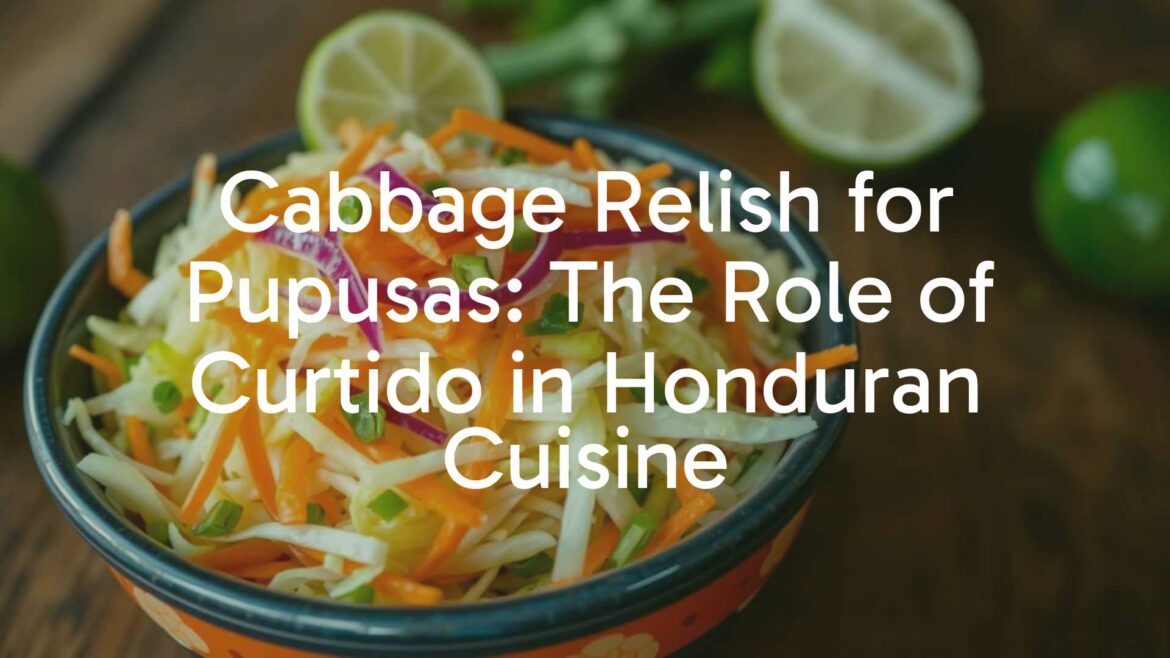Introduction to Cabbage Accompaniment in Honduran Pupusas
When it comes to enjoying pupusas, one of Central America’s most celebrated stuffed corn cakes, the humble cabbage plays an essential supporting role. In Honduras, the cabbage-based condiment known as curtido is not merely a topping, but an indispensable companion to pupusas, delivering freshness, crunch, and a tangy contrast to the thick, savory masa and cheese within. This article explores the unique attributes, cultural context, traditional ingredients, and notable variations of cabbage relish served with pupusas in Honduras.
Historical Roots and Evolution
While pupusas are widely recognized as originating in El Salvador, their popularity has spread throughout Central America, notably taking root in Honduras. The tradition of eating pupusas with a pickled cabbage salad, or curtido, emerged as a practical and flavorful way to balance the richness of these maize cakes. Over generations, Honduran cooks have adapted curtido to suit local palates, sometimes incorporating influences from neighboring cuisines.
Defining Ingredients and Preparation
The typical Honduran cabbage accompaniment for pupusas is marked by simplicity and its use of readily available ingredients. Shredded green cabbage forms the base, often mixed with thin slices of carrot, onion, and sometimes bell peppers. The mixture is steeped in a brine made of vinegar, water, salt, and a light touch of oregano or other herbs, allowing the vegetables to soften while retaining their bite. Compared to other regional versions, Honduran curtido may be less spicy and often features a subtle sweetness from the carrots or a mild vinegar blend.
Cultural Significance and Social Traditions
For many Hondurans, cabbage served with pupusas is more than a side salad—it is a symbol of community and shared culinary heritage. Street-side pupuserías and family gatherings alike are incomplete without curtido, which is seen as balancing the flavors and textures of the meal. The act of assembling pupusas, generously piling on cabbage slaw, and pouring a ladle of tomato sauce over the top fosters a sense of conviviality and pride in local food traditions.
Regional Adaptations and Popular Variations
Throughout Honduras, subtle differences in the cabbage relish reflect regional tastes and ingredient availability. For instance, coastal areas may include a hint of local hot chili or add fresh herbs such as cilantro for brightness. Urban pupuserías might offer several styles, ranging from classic lightly pickled curtido to more robustly seasoned versions, sometimes featuring jalapeños or a burst of garlic. Home cooks often tailor their cabbage slaw to family preference, ensuring that every batch is a unique reflection of tradition and taste.
Serving Tips and Enjoyment
Honduran cabbage relish is always served cold alongside freshly made pupusas, its cool acidity offsetting the warm, tender cakes. To experience the full harmony of flavors, diners are encouraged to use generous portions, topping each bite with curtido and complementary tomato salsa. The cabbage can also accompany other traditional dishes, adding texture and zest to tamales, fried yuca, or grilled meats.


